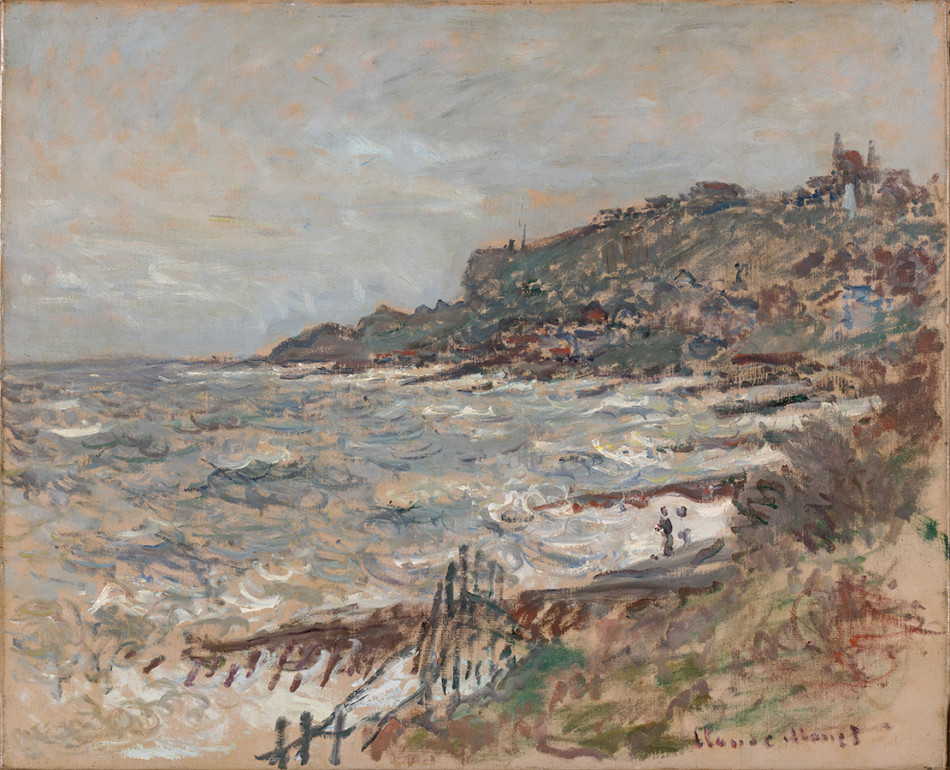The enduring appeal of Impressionism
The enduring appeal of Impressionism
By Deborah Levy
Published 17 September 2020
In bustling Parisian street scenes, windswept seascapes and shimmering portraits, the Impressionists sought immediacy in their art. Writer Deborah Levy finds their approach as radical today as ever, in the masterpieces on show from the Ordrupgaard Collection.
-
Deborah Levy is a novelist. Her latest work, The Man Who Saw Everything (Hamish Hamilton),was published last year.
From the Autumn 2020 issue of RA Magazine, issued quarterly to Friends of the RA. Gauguin and the Impressionists: Masterpieces from the Ordrupgaard Collection runs until 18 October 2020.Is it true that we are human clay onto which impressions of our world are pressed? I think it is. The noun ‘impression’ derives from the Latin imprimere, meaning to ‘press into or upon’, or ‘stamp’. We mostly tend to trust our first impressions of people and place. When we meet a stranger, we find that we are drawn to them, or even instantly love them, or are repelled and for some reason loathe them. The simultaneous flow of first impressions are stamped within us. Even if we change our mind, which is always a hopeful action (an open mind being more inspiring than a closed one), it is often the first impression that lingers in our memory.
In this sense, Impressionism as an art movement of the 1870s seems to be intuitively onside with the ways in which we look, think, feel and experience the world. It is strange then, how so persistently in every century, art and literature that departs from inherited forms of realism is derided, often by critics who hang on, knuckles straining, veins popping, to the old and familiar. Monet’s painting Impression, Sunrise (1872) was mocked at the time, then it lit up the world, just as his waterlilies floated from that pond in France into the consciousness of our own century.
The early Impressionists sought to capture with loose, fast brushstrokes an ‘impression’ of how the weather, or landscape, or an object, or human form, or a city street appeared to them in the fleeting, transient present tense. The crusty gentleman critics, aware that the grammar of painting (as they understood it) was changing, felt the first winds of the future avant-garde blowing through their oiled, drooping moustaches.
-
Alfred Sisley, Unloading Barges at Bilancourt, 1877.
-
I like to think of the early Impressionists – Claude Monet, Pierre-Auguste Renoir, Alfred Sisley – putting on sturdy shoes and walking out of their studios to paint en plein air. If Manet wondered if photography had rendered realism in painting rather pointless, it could however evoke the flow of simultaneous movement, time and feeling in the here and now. After all, a paintbrush is not a camera. The frantic brushstrokes of a younger artist, Vincent van Gogh, were by the 1880s creating from fields of golden wheat and the black crows of southern France the turbulent rhythms of his own existential enquiry into the point of life.
-
Claude Monet, The Cliff near Sainte-Adresse, Overcast, c.1881.
-
It is always historically interesting to try to work out the grammar of any new consciousness put to work in art and literature. We can glimpse this in some of the works of the Ordrupgaard Collection at the RA: the moody sky and sea in Monet’s The Cliff near Sainte-Adresse, Overcast (c.1881); a wistful, serene portrait of writer George Sand (1838), whose strength, liveliness and vulnerability are given equal status by Eugène Delacroix over 30 years before the first Impressionist exhibition; Camille Pissarro’s blurred outlines of speedy city life, as if seen from a balcony in Rue Saint-Lazare, Paris (1897); the ghostly, pale woman staring defiantly at us in Eva Gonzalès’s The Convalescent (Portrait of a Woman in White) (1877–78).
-
The early Impressionists sought to capture with loose, fast brushstrokes an ‘impression’ of how the weather, or landscape, or an object, or human form, or a city street appeared to them in the fleeting, transient present tense.
-
Here is Gertrude Stein, American writer and collector, writing in her own peculiar, beguiling style about the Impressionists. I think she is hinting that though the idea was to paint at speed, meticulous attention was still given to composition:
“‘The impressionists and they were 19th century had as their aspiration and their ideal one painting a day, really two paintings a day, the morning painting and the afternoon painting actually it might have been the early morning and the early afternoon and the late afternoon. But after all there is a limit to the human hand after all painting is hand painting so actually even at their most excited moment they rarely did more than two more frequently one, and very often not one a day, most generally not one a day.”
-
Eva Gonzalès, The Convalescent (Portrait of a Woman in White), 1877-78.
-
Further on in time, Francis Bacon – the subject of a forthcoming RA show – honoured his debt to Monet: “I like, you may say, the glitter and colour that comes from the mouth, and I’ve always hoped in a sense to be able to paint the mouth like Monet painted a sunset.” If Bacon’s brutal mouth devoured Monet’s fleeting sunset, it would seem that it nevertheless made an impression, an imprint, pressing itself into another sensibility and lighting up the work of a very different kind of artist.
-
-
Enjoyed this article?
Become a Friend to receive RA Magazine
As well as free entry to all of our exhibitions, Friends of the RA enjoy one of Britain’s most respected art magazines, delivered directly to your door. Why not join the club?

-







